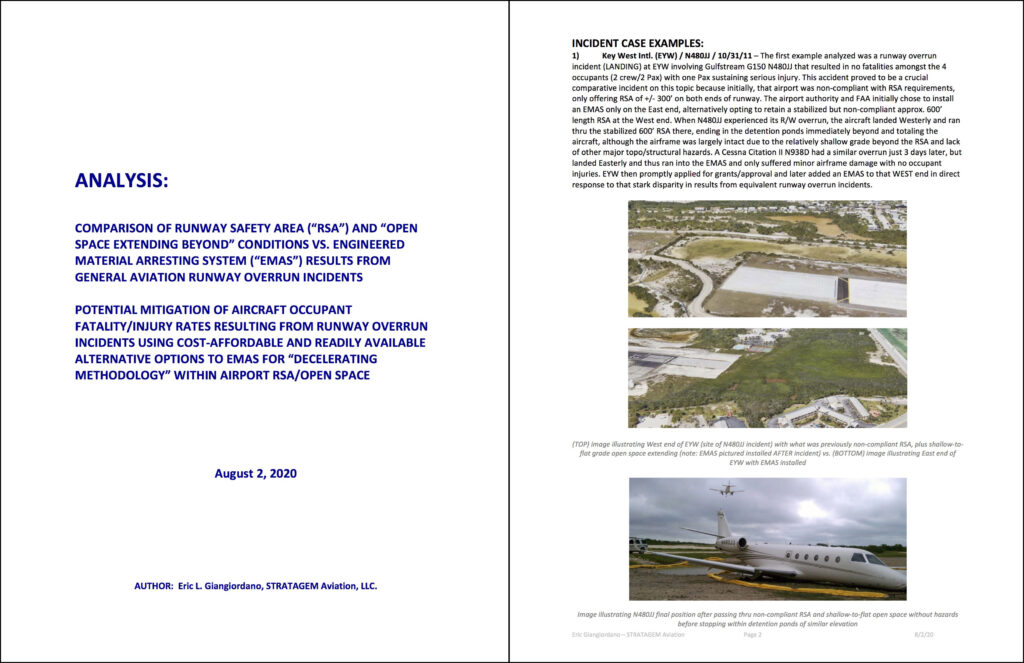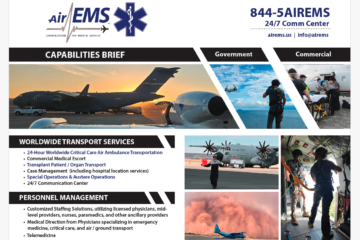Analysis of Runway Safety Area-Open Space vs. Runway Overruns
From Our Principal:
Over the course of the past year, I began analyzing a number of unrelated general aviation runway overrun incidents, including both rejected take-offs (RTO) and landings, and have drawn some interesting and compelling preliminary conclusions from this informal study and resulting brief I wrote to summarize what I learned.
Specifically, that regardless of airport runway safety area (“RSA”) that meets or exceeds the FAA recommended 1000′ length, there may be a compelling correlation between the specific conditions of the applicable RSA/open space beyond runway end area vs. occupant survivability rates, including the effects of lack of any “decelerating methodology” and/or absence of topographical-structural hazards within that runway end area.
And that cost-affordable alternative options to the most preferable engineered material arresting system (“EMAS”) – specifically, sand traps/ramps, may be readily available to general aviation airports to incorporate into their RSAs.
Potential goals of this analysis may include (a) increased education/awareness of RSA/open space beyond conditions for operators, airports, insurance underwriters and regulatory bodies including NTSB and FAA (b) further official study of subject matters (c) options for implementation of sand-trap/ramp “decelerating methodology” within runway end areas as a cost practical/available alternative in absence of EMAS.
To view this analysis/brief, please select the highlighted link below image, or the “Download” link to download a full copy of the file (NOTE: for re-print or re-production of this file in part or whole for any editorial and/or commercial purposes, interested parties should contact STRATAGEM Aviation for prior written authorization):



